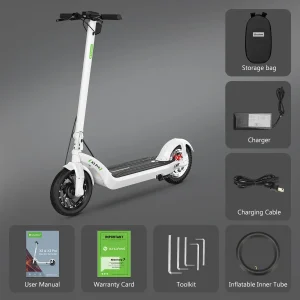Off-road electric mountain bikes (E-MTBs) are revolutionizing the biking experience, offering a blend of traditional mountain biking and innovative electric assistance. Understanding their essential features is crucial for enthusiasts and beginners alike.
Power and Performance
Motor Power
The heart of an off-road E-MTB is its electric motor. Typically, these motors range from 250 watts to 750 watts, providing ample power for challenging terrains. The higher the wattage, the more power it can deliver, enhancing uphill performance and acceleration.
Battery Capacity and Range
Battery life is a critical factor. Most off-road E-MTBs are equipped with lithium-ion batteries, offering a range of 25 to 70 miles per charge, depending on the model. This range is influenced by factors like rider weight, terrain, and riding style.
Speed and Efficiency
E-MTBs can reach speeds up to 20-25 mph, depending on local regulations. The efficiency of the bike is enhanced by pedal-assist technology, which amplifies the rider's pedaling effort, making for a less strenuous ride.
Design and Specifications
Frame Material and Quality
The frame is typically made from lightweight materials like aluminum or carbon fiber, offering a perfect balance between durability and weight. This choice of material directly impacts the bike's handling and comfort.
Size and Dimensions
E-MTBs come in various sizes to suit different riders. Key dimensions to consider include frame size, wheel size (usually 27.5 or 29 inches), and the bike's overall weight, which can range from 40 to 70 pounds.
Suspension and Traction
Suspension plays a vital role in off-road biking. Most E-MTBs feature front and full suspension systems to absorb shocks and provide a smoother ride. The quality of the tires also contributes to better traction on uneven surfaces.
Cost and Value
Pricing and Budget
The cost of an off-road E-MTB can vary widely, from $1,000 for entry-level models to over $5,000 for high-end versions. The price is influenced by factors like motor power, battery capacity, frame material, and additional features.
Longevity and Maintenance
With proper maintenance, an E-MTB can last several years. Regular servicing of the battery, motor, and other components is essential to prolong the bike's life and ensure safety.
Advantages and Limitations
Advantages
Off-road E-MTBs offer numerous advantages, such as the ability to cover longer distances with less fatigue, accessibility to a wider range of trails, and a lower environmental impact compared to traditional motor vehicles.

Limitations
However, they also have limitations. The initial cost can be high, and the weight of the bike might be a challenge for some riders. Additionally, the dependency on battery life can limit the range of exploration.
For more detailed insights into the features of off-road E-MTBs, including specific models and their capabilities, check out off-road e-mtb features.
Understanding these features helps riders make informed decisions and enhances their off-road biking experience. Whether it's tackling steep hills or navigating rugged trails, an off-road E-MTB is a powerful and exciting way to explore the great outdoors.